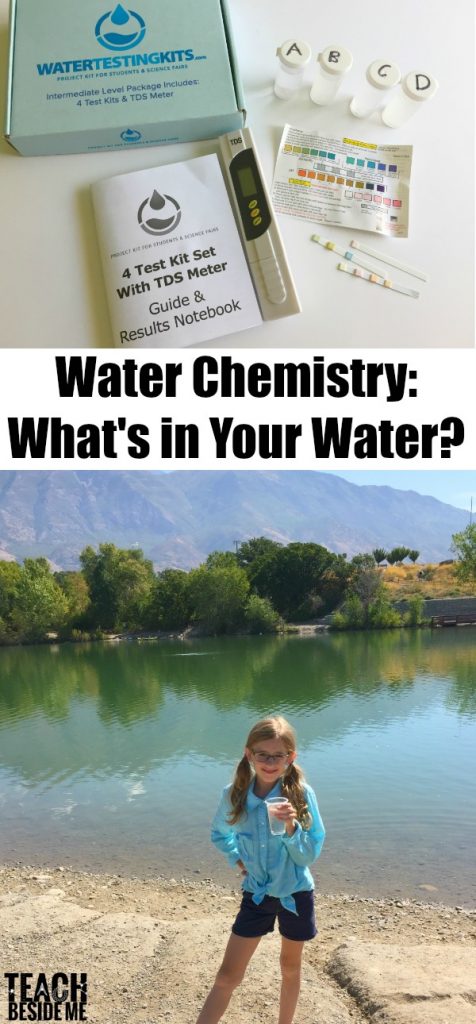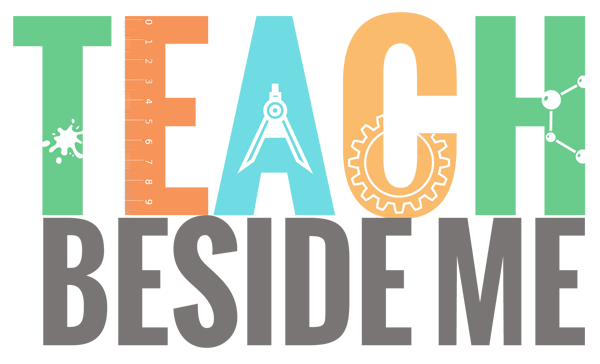Water Chemistry Experiment with at Home Water Testing
This post may contain affiliate links.
I received a free water testing kit for this post and I am being compensated for my time in writing this post. All thoughts and ideas are my own.
Have you ever wondered what is in the water you drink? Or the water your kids play in at the pond? We have been doing water chemistry experiments with an at home water testing kit from WaterTestingKits.com. We used them to test and compare multiple water sources in our area including our drinking water. This was such a fascinating experiment to conduct. We did a water filtration experiment in the past, so this was a perfect follow-up for us!

Why Should We Do Water Testing?
There are so many reasons to test water and know the levels of minerals and chemicals in it. It affects your pipes, your water heater, your laundry, your shower pressure, and even your health! It also affects the wildlife and nature around us. It is an important thing to understand and discover. In fact, it is recommended that you test your water every year!
You can pick up a water testing kit for yourself and try it out. We got a water testing kit that can be used for kids from elementary through high school levels. I highly recommend it. It was enlightening and could easily be incorporated into a science fair project or a water STEM lesson. Since we love hands-on learning activities, we loved doing this activity. It was also a great day to get out and be in nature and learn about the water in our community.
Water Testing: What’s in the Water?

The water testing kits we used came with 4 different individual tests. Each test had testing strips to test the different chemicals in the water. You insert the strip into the water and then watch it change colors to reflect the levels of that chemical. 
Alkalinity- This is a measure of the water’s ability to neutralize acids. Alkalinity helps to balance pH levels and to neutralize acidic pollution. It is important for living organisms, especially aquatic life giving the water a buffer against changes that may occur.

Hardness- Water hardness is determined by the amount of minerals in the water, particularly calcium and magnesium. The more minerals, the harder the water. An evidence of hard water are soap scum residues, and spots on your glasses. Calcium reacts with soap and leaves residue behind. It can also leave solid deposits behind on shower heads and water heaters. It reduces the efficiency of water heaters and builds up in pipes slowing the flow.
pH- pH is a measure of how acidic or basic the water is. Water with a lower pH would be acid and leach metal and chemicals from the pipes and other sources. It could make the water have higher levels of toxins and leave a sour taste. Water with a higher pH will be harder water.
Iron- Too much Iron in water can make it cloudy and have an unpleasant smell. Some underground water naturally contains iron, but it can also be absorbed from the ground as it runs through rocks and soil. It is not toxic in small amounts, but can cause orange or red staining and discoloration from the oxidation. It will build up in pipes causing lower pressure and higher water bills.
Chlorine- Water treatment centers add chlorine to water to reduce contaminants. The addition of chlorine has helped reduce illnesses due to unclean water. However, if the levels get too high, that causes other problems! Too much chlorine over an extended period of time causes different types of cancer. It is a toxic chemical and reacts to other in the water creating more toxins.

Nitrate and Nitrite Nitrogen- This can be found naturally in low levels. The reason it is important to test for nitrates is because they can be increased due to pesticides used in farming. Excessive amounts can be dangerous for infants and pregnant women. Nitrite is important to test when coming from wells and groundwater. The danger of having too many nitrates or nitrites in the water is with the blood flow in our bodies. Nitrates change hemoglobin into methemoglobin, which reduces the blood’s ability to transfer oxygen throughout the body causing people to become oxygen starved!
Copper- Copper exists naturally in water, soil, plants and animals, but to much can be harmful to us. It can get into the water from mining, farming or other industrial facilities. High levels of copper often come from well water or copper pipes. It can cause issues with the liver and lungs. It is particularly dangerous to children.
Total Dissolved Solids- usually abbreviated to TDS- it is the total amount of all inorganic and organic substances in a molecular form. It tests the sum of ions in the water. Higher levels will result in salty or lower quality. To test this we used the TDS meter that you insert into the water. It gives you a digital number reading.

We tested four different water sources. First, we did our home tap water. Then we went to three different parks with ponds and streams near our home and collected samples as well. This was a great outing for the kids and we deemed it nature study and a water chemistry experiment all rolled into one.

There are a few different water testing kits available:
Science Fair Water Testing Kit (This is what we used)
Complete Home Water Testing Kit
Lead In Water Test Kit:
Well Water Testing Kit
They are offering 10% off all products on their website with code BACKTOSCHOOL17 through 10/1/17
ALSO, enter to win your own water testing kit!






